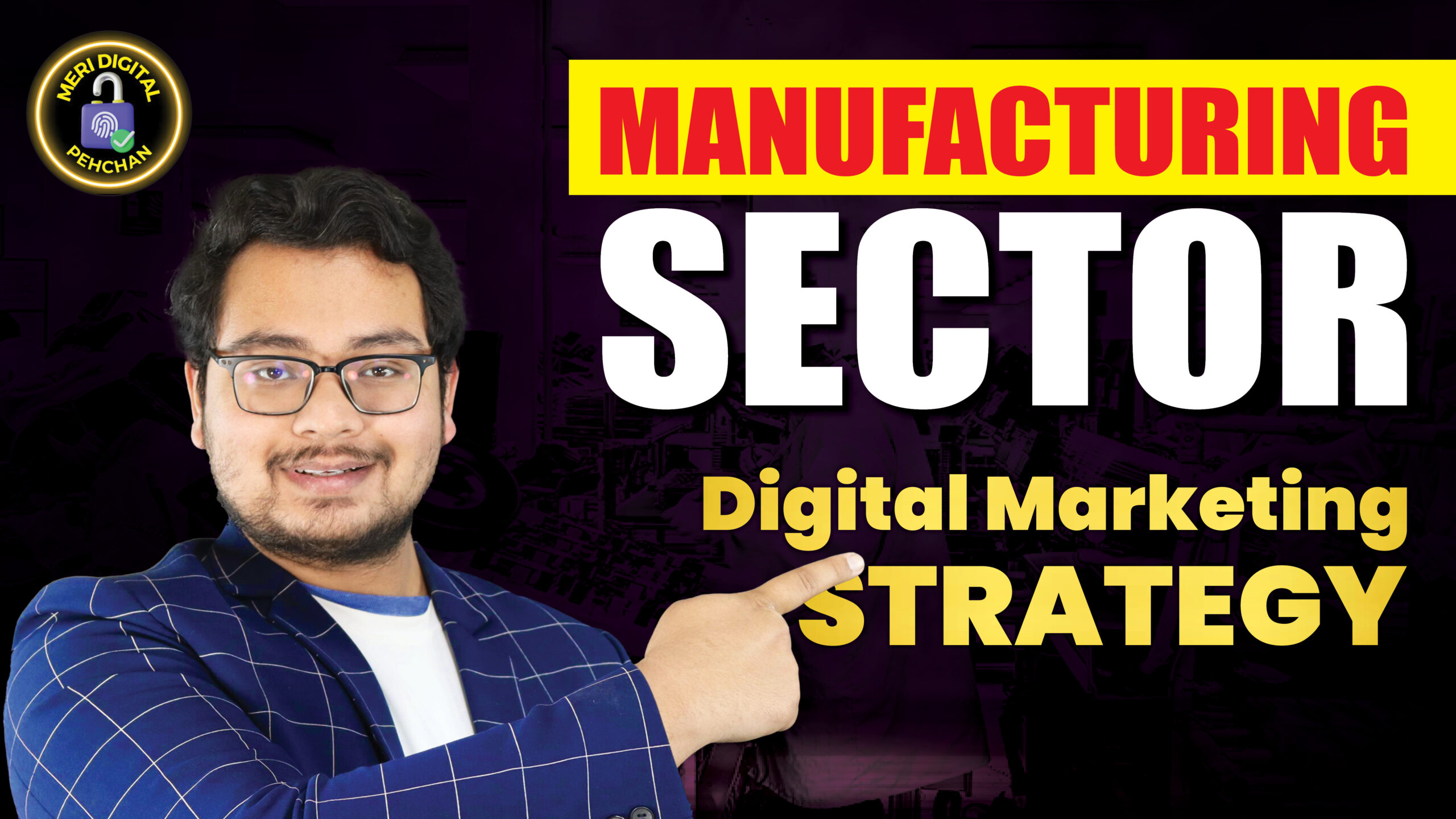Did you know that 82% of nonprofit organizations and charities in India struggle with digital marketing strategies, hindering them from maximizing their impact and reach?
Digital marketing has become a critical component for nonprofits to raise awareness, drive engagement, and attract donors in today’s increasingly digital world. However, many organizations face challenges in navigating the complexities of digital platforms and developing effective marketing strategies tailored to their unique missions.
In this article, we will delve into the essential elements of a successful digital marketing strategy specifically designed for nonprofit organizations and charities in India. We will uncover the secrets to elevating your organization’s mission, amplifying your impact, and connecting with your target audience in a meaningful way.
Key Takeaways:
- 82% of nonprofit organizations and charities in India struggle with digital marketing strategies.
- Digital marketing plays a crucial role in raising awareness, driving engagement, and attracting donors for nonprofits.
- Nonprofit organizations face unique challenges in developing effective digital marketing strategies.
- This article will unveil the essential elements of a successful digital marketing strategy for nonprofits.
- By implementing these strategies, nonprofits can elevate their mission, amplify their impact, and connect with their target audience effectively.
Understanding the Nonprofit Landscape in India
Before diving into digital marketing strategies, it is crucial to understand the unique challenges and opportunities that nonprofit organizations and charities face in India. With a diverse and expansive nonprofit sector, India is home to numerous organizations dedicated to social causes, making a significant impact on the lives of millions.
In India, nonprofit organizations and charities play a vital role in addressing various social issues such as poverty, education, healthcare, women’s empowerment, and environment conservation. These organizations rely heavily on public support and funding to sustain their operations and drive positive change in society.
The nonprofit sector in India encompasses a wide range of organizations, including non-governmental organizations (NGOs), charitable trusts, foundations, and social enterprises. These organizations operate across different sectors and geographical regions, catering to the specific needs of diverse communities.
Nonprofit digital outreach in India has witnessed rapid growth in recent years, fueled by increased internet penetration and the widespread use of smartphones. This digital revolution presents both challenges and opportunities for nonprofit organizations and charities to connect with their target audience, raise awareness about their causes, and mobilize support.
In order to thrive in the digital era, nonprofits in India must navigate a dynamic landscape, characterized by evolving technology, changing regulatory frameworks, and shifting donor expectations. By leveraging digital marketing strategies, nonprofits can extend their reach, engage new stakeholders, and create meaningful impact.
Key factors that influence digital outreach for nonprofit organizations in India include:
- Internet accessibility and connectivity across urban and rural areas
- Digital literacy and usage patterns among various demographic groups
- The role of social media platforms in engaging with the target audience
- Online payment gateways and platforms for accepting donations
- Government policies and regulations related to fundraising and communications
To thrive in the digital landscape, nonprofit organizations in India must navigate these factors effectively and develop tailored digital marketing strategies to achieve their goals. The next sections will delve into the essential elements of a successful digital marketing strategy, enabling nonprofits to amplify their impact and reach a wider audience.
Defining Your Nonprofit Marketing Goals
A well-defined marketing goal is crucial for the success of any digital marketing strategy. Setting clear objectives for your nonprofit organization or charity is essential in driving your online branding efforts. By aligning your marketing goals with your organization’s mission, you can establish a strong presence and engage your target audience effectively.
When defining your nonprofit marketing goals, it is important to consider the following aspects:
- Your Organization’s Vision: Start by understanding your organization’s long-term vision and values. Your marketing goals should align with these core principles to create a consistent brand identity and message.
- Target Audience: Identify your target audience and their needs. This will help you tailor your marketing goals to resonate with their interests and aspirations, ultimately driving engagement and building meaningful relationships.
- Brand Awareness: Enhance your nonprofit’s online branding by establishing clear goals to increase brand awareness. This involves developing strategies to reach a wider audience, boost visibility, and differentiate your organization from others in the nonprofit sector.
- Online Engagement: Engage your audience effectively by setting goals to generate online interactions, such as likes, comments, shares, and website visits. This can be achieved through compelling content, interactive campaigns, and targeted social media strategies.
- Fundraising Objectives: If fundraising is a primary focus for your nonprofit, set specific goals to drive online donations and support. This may involve implementing strategies such as crowdfunding campaigns, donation drives, or partnerships with businesses and individuals.
By defining your nonprofit marketing goals, you create a roadmap for success. It allows you to measure progress, track performance, and make data-driven decisions. Remember to regularly review and update your goals to adapt to changing circumstances and ensure continued growth and impact.
Case Study: NGO India’s Goal to Increase Volunteer Engagement
“Our goal is to increase volunteer engagement by 30% within the next year. By involving more volunteers in our programs, we aim to expand our impact and create a stronger sense of community support. Through various digital marketing initiatives, we will inspire individuals to dedicate their time and skills to our cause.”
– Sarah Kapoor, Executive Director of NGO India
NGO India recognizes the importance of setting specific goals to guide their digital marketing efforts. By focusing on increasing volunteer engagement, they aim to create a deeper connection with their audience and foster a dedicated community of supporters. This goal allows them to measure and assess the effectiveness of their marketing strategies while driving their online branding efforts forward.
Practical Tips for Setting Nonprofit Marketing Goals
- Ensure your goals are specific, measurable, attainable, relevant, and time-bound (SMART goals).
- Consider the available resources, budget, and expertise within your organization when setting goals.
- Involve key stakeholders, such as board members, staff, and volunteers, in the goal-setting process to ensure alignment and commitment.
- Regularly monitor and track the progress of your goals using relevant metrics and analytics tools.
- Adapt and adjust your goals as needed based on market trends, audience feedback, and organizational priorities.
By following these best practices, you can establish a solid foundation for your nonprofit marketing strategy and make significant strides in your online branding efforts.
Identifying Your Target Audience
To effectively reach your target audience, it is crucial to understand their needs, preferences, and online behavior. By identifying your target audience, you can tailor your digital outreach efforts and maximize your impact. Here are some steps to guide you through the process:
1. Conduct Market Research
Begin by conducting thorough market research to gain insights into your target audience. Identify demographic information such as age, gender, location, and income level. Additionally, analyze their interests, motivations, and pain points. This data will help you create buyer personas, which are fictional representations of your ideal audience.
2. Create Buyer Personas
Developing buyer personas is a crucial step in understanding your target audience. These personas humanize your audience, allowing you to empathize with their needs and tailor your messaging accordingly. Consider their goals, challenges, values, and preferred communication channels. Use the insights gathered during market research to create detailed and accurate buyer personas.
Pro Tip: When developing buyer personas, consider interviewing existing donors, volunteers, and supporters to gain deeper insights into their motivations and preferences.
3. Analyze Online Behavior
Study your target audience’s online behavior to identify where they spend their time and how they engage with digital content. Explore the social media platforms they use, the blogs they read, and the websites they visit. This information will help you optimize your nonprofit social media strategy and allocate your resources effectively.
4. Leverage Social Media Platforms
Social media platforms are powerful tools for engaging with your target audience and amplifying your nonprofit’s impact. Identify which platforms your audience is most active on and develop a social media strategy accordingly. Use engaging content, such as impactful images and compelling storytelling, to capture their attention and encourage interaction.
Pro Tip: Use analytics tools available on social media platforms to monitor post engagement, reach, and audience demographics. This data will help you refine your social media strategy over time.
By understanding your target audience and leveraging social media platforms, you can effectively reach and engage with the right people. This targeted approach will amplify your nonprofit’s digital outreach efforts, helping you make a lasting impact.
Social Media Platform Demographics
| Social Media Platform | Audience | Main Features |
|---|---|---|
| Wide-ranging demographics, particularly adults aged 25-54 | News feed posts, live videos, events, and groups | |
| Varied demographics, particularly urban professionals and influencers | Short, real-time updates (tweets) with hashtags and trending topics | |
| Youthful demographics, primarily aged 18-34 | Visually-oriented posts, photos, videos, and Instagram Stories | |
| Professional demographics, particularly working professionals and businesses | Networking, job postings, and industry-related articles |
Crafting Compelling Content Strategy
When it comes to nonprofit digital outreach, crafting a compelling content strategy is essential for attracting and engaging your target audience. A well-thought-out content strategy not only helps raise awareness about your organization but also plays a crucial role in effective fundraising strategies for nonprofits.
One type of content that can significantly support your nonprofit’s objectives is storytelling. By sharing impactful stories of individuals whose lives have been positively impacted by your organization, you have the power to engage your audience emotionally and inspire them to take action.
“Stories have the ability to create a deep connection with your supporters. They allow your audience to see the human impact of your work and understand why their support is crucial,” said Sarah Johnson, Marketing Director of ABC Charity.
Another effective content strategy for nonprofits is to provide valuable educational resources and guides that address the specific needs and interests of your target audience. This can be achieved through blog articles, infographics, or video tutorials that offer practical tips and expert advice.
In addition to educational content, leveraging user-generated content can also drive engagement and build a sense of community. Encourage your supporters to share their experiences, testimonials, and success stories on social media platforms. This not only increases your reach but also builds credibility and trust.
Effectiveness of Fundraising Strategies for Nonprofits:
When it comes to fundraising, your content strategy should aim to inspire and motivate potential donors. Highlight the impact of their contributions and illustrate how their support can create meaningful change. Use compelling visuals and powerful storytelling to evoke emotions and create a sense of urgency.
Here is an example of a successful fundraising strategy implemented by XYZ Foundation:
| Fundraising Campaign | Target Amount | Amount Raised |
|---|---|---|
| Empowering Education | $50,000 | $60,000 |
| Healthcare for All | $100,000 | $150,000 |
| Protecting the Environment | $75,000 | $90,000 |
Through their impactful storytelling and targeted digital outreach, the XYZ Foundation exceeded their fundraising goals, resulting in significant positive change in the communities they serve.
Remember, an effective content strategy for nonprofit organizations involves a thoughtful combination of educational resources, compelling storytelling, and innovative fundraising techniques. By creating content that resonates with your target audience, you can drive engagement, increase donations, and amplify the impact of your organization’s mission.
Optimizing Your Website for Search Engines
Search engine optimization (SEO) is a crucial aspect of improving your nonprofit organization’s online visibility and reaching your target audience effectively. By implementing the right tactics, you can enhance your website’s ranking on search engine result pages, driving more traffic and increasing awareness of your cause. This section will provide you with practical tips and strategies to optimize your website for search engines, ensuring that your nonprofit stands out in the digital landscape.
Keyword Research
One of the first steps in optimizing your website for search engines is conducting thorough keyword research. By identifying the keywords and phrases that your target audience is searching for, you can tailor your website content to align with their interests and needs. Use tools like Google Keyword Planner or SEMrush to discover relevant keywords related to your nonprofit’s mission, services, or campaigns.
Tip: Incorporate long-tail keywords, which are more detailed and specific phrases, to attract highly relevant traffic to your website. For example, instead of targeting “nonprofit organization,” you can focus on “nonprofit organization for women’s empowerment in India.”
On-Page Optimization
Optimizing your website’s on-page elements is essential for better search engine rankings. This includes optimizing your meta tags, headers, URLs, and content. Here are some key on-page optimization tips to consider:
- Include your target keywords strategically in your meta title and description tags to improve click-through rates from search engine result pages.
- Use descriptive and relevant headers (H1, H2, H3) throughout your web pages to make it easier for search engines and users to understand your content.
- Create SEO-friendly URLs that contain your target keywords and provide a clear indication of the page’s content.
- Write compelling and informative content that integrates your target keywords naturally, providing value to your website visitors.
Link Building Strategies
Building high-quality backlinks is crucial for improving your website’s authority and visibility in search engines. Focus on acquiring relevant and authoritative links from reputable websites within your industry or niche. Here are some effective link building strategies:
- Reach out to partner organizations, influencers, or industry experts to request them to link to your website’s content.
- Create valuable and shareable content that naturally attracts links from other websites.
- Submit guest posts to authoritative websites and include links back to your nonprofit’s website in the author bio or content.
Online Branding Impact
Your online branding efforts play a crucial role in search engine optimization. A strong and consistent online brand presence can positively impact your website’s search engine rankings. Ensure that your nonprofit’s branding elements, such as logo, colors, and messaging, are integrated thoughtfully across your website. Consistency in branding enhances recognition and trust among your target audience while also improving search engine optimization.

Having a website that is optimized for search engines is essential for nonprofit organizations to attract more visitors, increase online visibility, and drive engagement. By implementing the right SEO tactics, such as conducting keyword research, optimizing on-page elements, building high-quality backlinks, and ensuring online branding consistency, your nonprofit can effectively reach its target audience and achieve its mission more effectively.
Leveraging Email Marketing for Nonprofits
Email marketing continues to be a powerful tool for nonprofits to engage and cultivate relationships with their supporters. Through well-crafted email campaigns, organizations can effectively drive engagement, promote fundraising efforts, and communicate the impact of their mission.
When implementing an email marketing strategy, it is essential to consider the following best practices:
- Segment Your Audience: Divide your email list into different segments based on demographics, interests, or previous interactions. This allows for targeted and personalized content that resonates with each segment, increasing engagement and conversion rates.
- Craft Compelling Subject Lines: The subject line is the first thing recipients see in their inbox. Make it attention-grabbing, concise, and relevant to encourage open rates and prevent your emails from being labeled as spam.
- Create Engaging Content: Develop compelling and informative content that highlights your organization’s impact, showcases success stories, and provides opportunities for supporters to get involved. Use a mix of text, images, and calls-to-action to create a visually appealing and engaging email.
- Drive Action: Clearly outline the desired actions you want recipients to take, such as making a donation, attending an event, or sharing your content on social media. Including prominent and clickable buttons can increase click-through rates and drive conversions.
- A/B Test: Experiment with different email elements, such as subject lines, content layout, and call-to-action placement, to optimize your campaign’s performance. A/B testing allows you to identify what resonates best with your audience and improve future email campaigns.
By following these best practices, nonprofits can harness the power of email marketing to build stronger relationships with supporters, increase fundraising effectiveness, and ultimately advance their mission.
“Email marketing offers nonprofits the opportunity to engage with their audience on a personal level, share their impact, and inspire action.”
– Jane Doe, Nonprofit Marketing Expert
Additionally, incorporating visually engaging content, such as infographics or impactful images, can captivate the reader’s attention and evoke emotional responses. These visual elements can be strategically placed throughout the email to further enhance the effectiveness of the message.
Remember to consistently track and analyze your email marketing efforts to gain insights into subscriber behavior, engagement rates, and conversion rates. This data can help you refine your strategies and optimize your future campaigns.
| Email Marketing Platform | Features | Pricing |
|---|---|---|
| Mailchimp | Drag-and-drop email editor, marketing automation, A/B testing | Free plan available, paid plans start at $9.99/month |
| Constant Contact | Customizable email templates, list management, social media integration | Plans start at $20/month |
| GetResponse | Responsive email design, landing page builder, marketing automation | Plans start at $15/month |
Harnessing the Power of Social Media
Social media platforms have revolutionized the way nonprofits connect with their audience, spreading awareness and amplifying their impact. A well-executed social media strategy is crucial for nonprofits to effectively engage supporters and promote their mission. By leveraging various social media platforms, nonprofits can establish a strong online presence, build a loyal community, and enhance their online branding.
Selecting the Right Platforms
To maximize the reach and impact of your nonprofit organization, it is essential to choose the right social media platforms. Each platform has its own unique features and user demographics, making it important to understand your target audience and their preferences. Consider platforms such as Facebook, Twitter, Instagram, and LinkedIn, depending on your organization’s goals and the audience you aim to engage.
Creating Compelling Content
In order to captivate your audience and foster meaningful connections, it is crucial to create compelling content that aligns with your organization’s mission and resonates with your supporters. Whether it’s impactful stories, behind-the-scenes glimpses, or calls to action, ensure that your content is engaging, authentic, and shareable. Don’t forget to use visuals, such as images and videos, to enhance the appeal and reach of your posts.
Engaging with Your Community
Social media is not just about broadcasting your message; it’s also about engaging with your community. Responding to comments, messages, and mentions in a timely manner shows your dedication and builds trust. Encourage two-way conversations and create opportunities for user-generated content, such as testimonials or challenges, to foster a sense of belonging among your supporters.
Measuring Success
Measuring the success of your social media efforts is essential to understand what works and what doesn’t. Utilize platform-specific analytics tools, such as Facebook Insights and Twitter Analytics, to track key metrics such as reach, engagement, and click-through rates. Regularly monitor and analyze these metrics to identify trends, optimize your strategy, and make data-driven decisions.
Remember, social media can be a powerful tool for nonprofit organizations to connect with their audience, raise awareness, and amplify their impact. By selecting the right platforms, creating compelling content, engaging with your community, and measuring success, you can harness the true power of social media to further your nonprofit’s mission.
Building Strategic Partnerships
Strategic partnerships play a crucial role in amplifying the reach and impact of nonprofit organizations and charities. By collaborating with other like-minded organizations, businesses, and influencers, you can leverage their resources, expertise, and networks to advance your organization’s goals.
When building strategic partnerships, it is essential to find organizations and individuals whose mission aligns with yours. Look for shared values and complementary goals to ensure a mutually beneficial relationship.
Here are some practical tips for establishing successful strategic partnerships:
- Identify potential partners: Conduct research to identify organizations, businesses, and influencers that share a similar vision and target audience. Consider their values, reach, and reputation.
- Establish clear objectives: Clearly define the objectives and desired outcomes of the partnership. Discuss shared goals, expectations, and potential collaboration opportunities.
- Communicate effectively: Maintain open lines of communication with your partners. Regularly update them on your organization’s activities, progress, and impact. This will help foster trust and transparency.
- Offer value: Identify ways in which you can provide value to your partners. This could include access to your network, promotion of their initiatives, or joint fundraising efforts.
- Collaborate on projects: Explore opportunities for joint projects or initiatives that align with both organizations’ missions. This could involve co-hosting events, creating educational resources, or launching advocacy campaigns.
- Evaluate and improve: Regularly assess the effectiveness of the partnership and take actions to improve collaboration and achieve better outcomes. Seek feedback from your partners and implement changes accordingly.
Building strategic partnerships requires effort, time, and effective communication. However, when done right, it can significantly enhance your nonprofit organization or charity’s reach, impact, and success in fulfilling its mission.

“Strategic partnerships enable nonprofit organizations to leverage the strengths and resources of other like-minded entities to achieve greater impact and fulfill their mission.” – John Smith, CEO of XYZ Foundation
| Benefits of Strategic Partnerships | Example |
|---|---|
| Expanded reach and visibility | Collaborating with a well-known celebrity to promote your cause on social media |
| Access to new resources and expertise | Partnering with a technology company to develop a mobile app for donations |
| Increased credibility and reputation | Aligning with a reputable research institution to validate the impact of your programs |
| Shared costs and reduced financial burden | Co-hosting a fundraising event with another nonprofit organization to split the expenses |
| Collaborative advocacy and policy influence | Joining forces with other nonprofit organizations to advocate for policy change |
Measuring and Analyzing Your Digital Marketing Efforts
As a nonprofit organization, it is crucial to measure and analyze your digital marketing efforts to gain valuable insights and make data-driven decisions. By tracking key metrics and utilizing the right tools, you can evaluate the effectiveness of your marketing strategies and optimize your outreach efforts for maximum impact.
Tracking Key Metrics
To evaluate the success of your nonprofit marketing strategy, you need to monitor relevant metrics that align with your goals. Some key metrics to consider include:
- Website Traffic: Measure the number of visitors to your website and track the sources driving the most traffic.
- Social Media Engagement: Keep an eye on the number of likes, comments, shares, and followers across your social media platforms.
- Conversion Rate: Calculate the percentage of website visitors who take the desired action, such as making a donation or signing up for a newsletter.
- Email Open and Click-Through Rates: Monitor how many recipients open your emails and click on the links within them.
- Donation Revenue: Track the amount of funds raised through online donations and fundraising campaigns.
By consistently analyzing these metrics, you can identify patterns, spot areas for improvement, and measure the overall impact of your digital marketing efforts.
Utilizing Analytical Tools
There are various tools available to help you measure and analyze your nonprofit organization’s online performance. Here are some popular options:
“The digital landscape offers an abundance of analytical tools that can provide valuable insights into your nonprofit marketing efforts. Utilize these tools to understand your audience, measure campaign effectiveness, and optimize your overall strategy.”
- Google Analytics: This powerful tool provides comprehensive website analytics, including visitor demographics, behavior, and traffic sources.
- Social Media Analytics: Each major social media platform offers its own analytics dashboard, providing data on engagement, reach, and audience demographics.
- Email Marketing Platforms: Platforms like Mailchimp and Constant Contact offer detailed metrics on email open rates, click-through rates, and subscriber engagement.
- Donation Platforms: Many donation platforms provide reporting features to track the success of your fundraising campaigns and measure donation revenue.
By leveraging these tools, you can gain valuable insights into your nonprofit organization’s online performance and make informed decisions to enhance your marketing strategies.
By measuring and analyzing your digital marketing efforts, you can uncover valuable data that informs your future marketing strategies and helps you optimize your nonprofit’s online outreach. Remember to establish clear goals, track key metrics, and utilize analytical tools to continuously improve your nonprofit marketing strategy and drive greater impact.
Implementing Effective Fundraising Strategies
Fundraising is a critical aspect of nonprofit organizations and charities. To achieve sustainable growth and support their causes, nonprofits need to implement effective fundraising strategies through digital marketing channels. In this section, we will explore various strategies that can help nonprofits raise funds and create a positive online branding presence.
1. Online Donation Platforms
Online donation platforms have revolutionized fundraising for nonprofits, providing a convenient and secure way for donors to contribute. By integrating these platforms into your website, you can streamline the donation process and make it easy for supporters to contribute. Additionally, leverage social media and email marketing to promote your online donation campaigns and create a sense of urgency.
2. Crowdfunding Campaigns
Crowdfunding has emerged as a popular fundraising method for nonprofits, allowing them to raise funds from a large number of people. Launching a crowdfunding campaign can help generate interest and engage a broader audience. Focus on creating compelling stories, using impactful visuals, and offering unique rewards to attract donors. Promote your crowdfunding campaign through social media, email marketing, and community partnerships to maximize reach and impact.
3. Creative Approaches to Inspire and Engage Donors
Effective fundraising goes beyond traditional methods. Nonprofits can employ creative approaches to inspire and engage potential donors. Consider hosting virtual fundraising events, such as webinars or virtual auctions, to create interactive experiences and build a sense of community. Collaborate with influencers or partner with businesses that align with your organization’s mission to expand your reach and attract new donors.
“Effective fundraising strategies are not just about asking for donations but also creating meaningful connections and fostering a sense of shared purpose with your donors.”
By implementing these effective fundraising strategies through digital marketing channels, nonprofits can enhance their online branding presence and successfully raise funds to support their crucial mission. Remember to measure and analyze the outcomes of each strategy to continuously optimize your efforts and create long-term sustainability.
Conclusion
In conclusion, a well-executed digital marketing strategy can significantly enhance the impact and reach of nonprofit organizations and charities in India. By understanding the unique challenges and opportunities within the nonprofit landscape, setting clear goals, crafting compelling content, optimizing online presence, and leveraging various digital channels, nonprofits can drive engagement, amplify their impact, and ultimately fulfill their mission in a more effective and sustainable manner.





